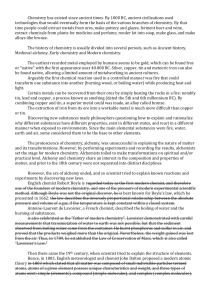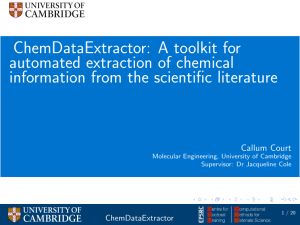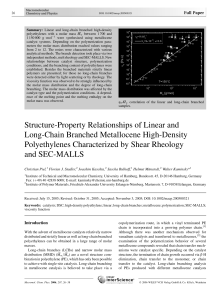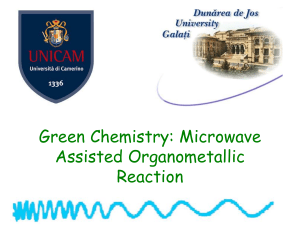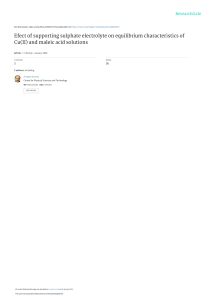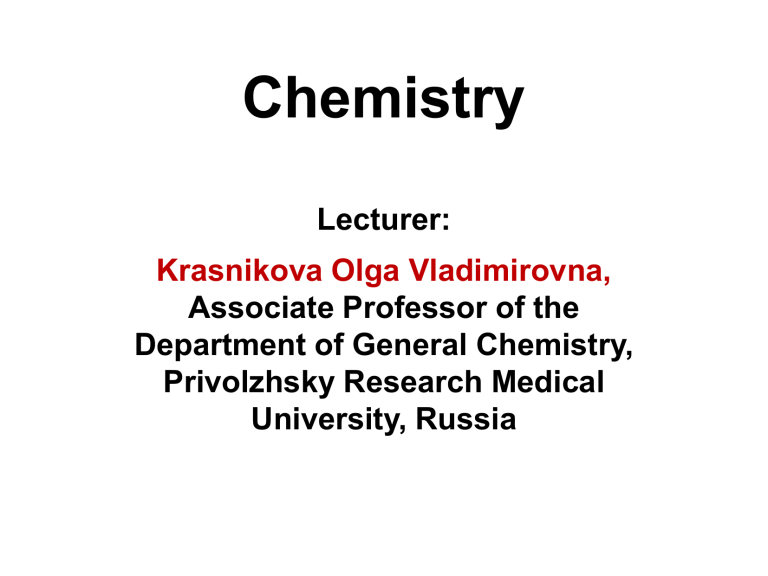
Chemistry Lecturer: Krasnikova Olga Vladimirovna, Associate Professor of the Department of General Chemistry, Privolzhsky Research Medical University, Russia For work we will use the website of distance education (СДО) 1. We find in the Google browser - CDO PIMU (СДО ПИМУ)… 2. Go to the tab «PIMU Distance Education Portal» «Портал дистанционного образования ПИМУ" 3.We go to your personal account. We type our username and password. 4. Scroll down the department names and find the general chemistry department (ОБЩАЯ ХИМИЯ) 5.Click on the GENERAL CHEMISTRY (ОБЩАЯ ХИМИЯ) tab 6. Our course - CHEMISTRY 7.Visit the “Notice" section every day. 8.Also, each topic has a section - Answers of students. At each lesson you will be given tasks and you must attach your answers in this section. IMPORTANT!!! ● ● ● ● ● 1. After each lesson, complete the task and attach it to the CDO until 21.00 of the current day. 2. If there is no answer, the student receives a mark of 2 3. You cannot skip classes. Every lesson we have a roll call. 4. Lesson starts at 8.00 on Tuesdays 5. You can get a mark for an exam automatically - if you have not missed a single lesson and have attached all the answers on time. IMPORTANT!!! You need to write all the important information from each slide from your exercise book. TOPIC: Solutions. Ways of expressing concentration of solutions. 1. SEMINAR. 1.1. Ways of expressing concentration of solutions (mass fraction, molarity, molality, molar concentration of the equivalent, titer). 1.2. Preparation of a solution of a given concentration. A solution is a homogeneous mixture of particles- ions, atoms, or moleculesof two or more different substances. Homogeneous in this definition means that the properties and the appearance of all parts of the solution are uniform. That is, no boundary between particles is visible with or without the aid of instruments. In a solution, the particles are of atomic, molecular, or ionic size. Solutions are usually discussed in terms of solvent and solute. In general, the substance present in the greater amount is referred as the solvent, while the other substance is called the solute. The concentration of a solute is the amount of solute dissolved in a given quantity of solution. The concentration of a solution is determined by the amount of solute present in a definite mass of the solvent at a particular temperature. 1. Mass percentage (sometimes is called weight percentage) of solute is the mass of solute per 100 parts of total, by mass. That is, Where: is the mass fraction of substance X; m(solute) is the mass of the solute substance X (kg, g); m(solution) is the mass of the solution (kg, g). 5.00 g NaCl dissolved in 97.0 g of water 2. Molarity The concentration is commonly called the molarity, abbreviated C(X). Molar concentration C(X) is expressed in mol/L. The molar concentration is calculated by the equation: Where: n(solute) is the moles of a dissolved substance, mole; m(solute) is the mass of a dissolved substance, kg or g; V (solution) is the volume of a solution, liter. Molar mass according to the periodic table, add up the relative atomic masses. Hydrogen 1, chlorine 35.5, total 36.5 grams per mole The notions of equivalent and factor of equivalent are widely used in chemistry. The equivalent of a compound (substance) is such an amount of substance that reacts without any residue with one equivalent of hydrogen or in general with one equivalent of any other substance in an exchange reaction or it transfers one electron in an oxidation – reduction reaction. Factor of equivalent fequiv(X) is a number, showing which part of the substance (X) equivalent reacts with one hydrogen ion in a given acid – base reaction or with one electron in a given oxidation-reduction reaction. Factor of equivalent is calculated on the basis of stoichiometry of a given reaction by the equation: acid base 3. Molar concentration of equivalent (normality). The notion of molar concentration of the equivalent is used for solutions. The molar concentration of the equivalent, sometimes called normality of a solution is calculated by the equation: =М (X)*1/z r 4. Titer The titer of a solution is denoted by T(X). The titer shows what mass of a substance (X) is contained in 1 mL of its solution. The unit is g/mL. The titer of a solution can be calculated by the equation: 1/3 H3PO4 homework 1. What volume (in mL) of 40% H3PO4 solution (ρ=1,25 g/cm3) is necessary to prepare 400mL of 0,25N of phosphoric acid solution (ρ=1g/cm3)? 2.How many grams of K2SO4 are necessary to prepare 100mL of 0,1N K2SO4 solution? Calculate the mass fraction of K2SO4 in the obtained solution (density of the solution = 1,0 g/cm3). 3. The mass of oxalic acid crystalline hydrate H2C2O4∙2H2O (3,1547g) was dissolved in a volumetric flask of 750mL. Calculate the molality, normality and titer of this solution. 4.Solve the test - Initial level
